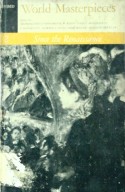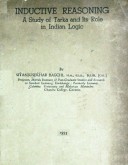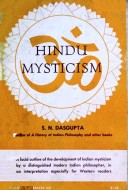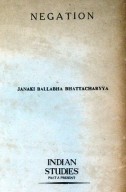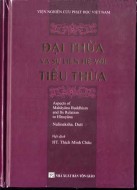Tìm Sách
Sách tiếng Anh-English >> Studies In The Origins Of Buddhism
Thông tin tra cứu
- Tên sách : Studies In The Origins Of Buddhism
- Tác giả : Govind Chandra Pande
- Dịch giả :
- Ngôn ngữ : Anh
- Số trang : 604
- Nhà xuất bản : Motilal Banarsidass DELHI VARANASI
- Năm xuất bản : 1974
- Phân loại : Sách tiếng Anh-English
- MCB : 1210000004938
- OPAC :
- Tóm tắt :
PREFACE TO THE SECOND EDITION
In preparing the present second edition I have corrected some slips which had inadvertantly crept into the first edition and taken note of the significant and relevant publications since 1957 when the first edition of this work had been published. My conclusions and arguments, however, remain unchanged and hence the second edition remains substantially identical with the first.
I am grateful to my colleagues Dr. S.K. Gupta and Dr. S.N. Dube who have helped me in revising the work for the second edition. I am similarly grateful to my students Mrs. Nilima Vashishtha and Shri V.M. Diwakar.
That the second edition of the work has been prepared at all is above all due to the persistent interest of M/s Motilal Banarsidass. Had they not goaded me over several years the work might never have been completed.
4-4-1974 G. C. PANDE
Jaipur
PREFACE TO FIRST EDITION
Much has been written on early Buddhism and yet the need of a fresh study of the subject can hardly be gainsaid. Mrs. Rhys Davids has raised the all-important question: what was the original message of Buddhism? This pointed query has rudely disturbed the almost settled composure of Buddhist scholarship. As soon as it is admitted that the original mandate of Buddhism might have been something different from what it is traditionally reported to have been—and tradition is not unanimous—we are forced to adopt a more critical, a more historical outlook towards our texts; and the adoption of this New Approach, of which Mrs. Rhys Davids has been the pioneer, at once necessitates a re-study of the problems of Buddhist origins.
At the very outset we have to realize that even the pearliest available collections within the Buddhist canon are of uncertain date and heterogeneous contents. Mrs. Rhys Davids has drawn attention to the fact that the Nikãyas do not preach a uniform set of doctrines. It will be seen that they contain within themselves the seeds of multiform growth. From what we know about the Chinese Agamas it appears safe to draw a similar general conclusion about them. A historical approach to ancient Buddhism, therefore, most certainly entails the stratification of the Nikãyas and the Ãgamas. The task is attempted with reference to the Nikãyas in Chapters I-VII.
There is, again, an additional reason for a fresh study of the subject. The discoveries in the Indus Valley have revolutionized our perspective of the foundations of Indian religion and culture. They have shown that a civilized non-Vedic culture once existed-in prehistoric India. This invalidates the common assumption that all higher thought in India existing before Buddha must necessarily have had a Vedic origin. In fact, civilization in India, as elsewhere, has been a composite creation. Numerous races and cultural communities have met and struggled and mingled in the long history of Indian culture which has progressed through the synthesis of diverse conflicts. It seems desirable to review from this standpoint the development of Vedic religion and culture and of the social and intellectual tendencies of the Age of Buddha and Mahãvĩra. The task is here attempted principally in Chapters VIII-IX.
Although a great deal has been written on the life of Buddha, it still remains a desideratum to correlate his life and quest, experience and mission, with his teachings. This task is attempted in Chapter X.
There has been much controversy over the “correct” interpretation of such points of Buddhist doctrine as Pratĩtyasamutpãda and Nirvana. Now the ancient canonical texts are themselves not quite agreed on these points, which is intelligible enough since the texts in question are spread over a considerable period of time. The “original gospel” assumed various forms in the course of its development and was soon grown over by them to the point of obscurity. It appears that unless the ancient Buddhist ideas are analysed clearly with reference to their historical or genetic relationship it will hardly be possible to trace firmly their original foundations. This task is attempted in Chapters XI— XIII.
The last two chapters attempt a brief .analysis of certain historical problems arising out of the early development of Buddhism.
The present work is, thus, designed to consist of a group of organically connected historical studies relating to the origins of Buddhism. It is the doctrinal rather than the institutional aspect of Buddhism that is mainly I considered. The subject-matter is for the greater part of a literary and religio-philosophic character, but the treatment is intended to be primarily historical.
The approach has been mainly through the Indian sources of Buddhism. Chinese and Tibetan sources I have also been utilized as far as possible, though not from the original languages. The present work is substantially identical with a thesis of the same title which was approved in the University of Allahabad for the Degree of (Doctor of Philosophy in 1947. The arrangement of material has been altered, and necessary modifications shave been made in the light of subsequent study and reflection.
My deepest debt is to Pt. K. Chattopadhyaya, Readier in Sanskrit, University of Allahabad, who supervised my research work and has guided me all along. I am profoundly grateful to the authorities of the University of Allahabad viz., Sri B. N. Jha, Vice-Chancellor, Dr. B. R. Saksena, D.Litt., Dean of the Faculty of Arts, Sri K. L. Govil, Registrar, Dr. B. P. Saksena, Ph’JD., Professor of History, and Sri G. R. Sharma, Head of the Department of Ancient History, Culture and Archaeology, who have made the publication of the present work possible.
It is regretted that owing to haste some misprints, which mostly do not affect the sense, have escaped proofreading. Except for some obvious omissions of diacritical and punctuation marks, these have, however, been indicated in the list of errata at the end.
I am thankful to Sri Brij Nath Singh Yadav, M.A., D.Phil., for his help in the preparation of the Index. I am also thankful to Sri H. P. Ghosh, Manager, Indian Press, and Sri K. P. Dar, Press Manager, for their helpful co-operation in the printing of the present work.
G. C. Pand
CONTENTS
Chapter
Preface
PART I – STUDIES IN EARLY BUDDHIST SOURCES
I. The Buddhist Canon and Its Chronology
The Abhidharma and its versions; The Vinaya and its versions; The Nikãyas and the Agamas; The chronology of the canon, esp., of the Nikayas.
II. The Stratification of the Nikãyas: Problems AND Methods Critical résumé of previous work; The criteria of stratification; The state of doctrinal evolution; Interpolation; Vocabulary and other linguistic features; Geography; Political and Social data; Prose and verse.
III. The Stratification of Suttanipãta, Itivuttaka and Udãna
Suttanipãta: Chinese evidence; The Atthaka- vagga; The Pãrâyạna-vagga; The Mahavagga; Conclusion. Itivuttaka: Chinese version; The various Nipảtas; Conclusion; Udanaj Prose and verse; The various Vaggas; Conclusion.
IV. Early and Late in the Digha-Nikãya
Early and late in Dirghagama and Digha- nikãya; Analysis of the Suttas; Conclusion.
V. Early and Late in the Majjhima-Nikaya
The grouping and order of the Suttas; Classification and analysis of the Suttas; Conclusion.
VI. Early and Late in the Samyutta-Nikãya
Samyutta-nikaya and Samyuktâgama; Analysis; Conclusion
VII. Early and Late in the Anguttara-N IKAYA
Aiiguttara-nikava and the Ekottarãgama; Form and Style; Partial stratification.
PART II – STUDIES IN THE HISTORICAL AND CULTURAL BACKGROUND OF EARLY BUDDHISM
VIII. Review of the Vedic Background
The significance of Pre-Vedic Civilisation; Munis and sramanas in the Vedic Age; The development of Vedic society; Gods and men; Ritual and its development; Brahmana Eschatology and Transmigration; Moral revolution; The growth of Self-knowledge; Yoga: The origins of Sankhya.
IX. Religious Conditions in the Age of Buddha
Social being and social consciousness; Social change m the Age of- Buddha. The Brahmarias and their religion; Popular religion; The rise of asceticism; Intellectual ferment; Early Jaina faith.
X. The Life of Buddha
Sources; Early life and circumstances; Renouncing the world; The Noble Quest and Enlightenment; The spread of Buddha’s doctrine; Buddha’s personality.
PART III – STUDIES IN EARLY BUDDHIST DOCTRINÉS
XI. Suffering and its Origin
The Noble Truths; Suffering and its place in Buddha’s teachings; The origin of Suffering; The interpretations of Pratitya- samutpada; The two aspects of Pratĩtya- samutpãda; The general principle; The Middle Way; Pratityasamutpada; The applied form; The development of formula.
XII. Nirvana
The interpretations of Nirvana-ancient and modern; The problem of Nirvana; Sambodhi and Nirvãna; The meaning and significance of Dharma; Nirvana and Pratĩtyaaamutpada; The nature of Nirvana; The problem of Self: Historical analysis of the Nikaya data; Buddha’s Silence; Conclusion.
XIII. The Way to Nirvana
The Way and the Truth; The Buddhist Way and the Upamsads; Sĩla—Samãdhi— Prajna; Bodhipakkhiyadhammas; Moral culture; Conơrnưation and meditation; Stages of spiritual progress.
XIV. Early Buddhism in Reiation to its Rivals and Forerunners
Jainism; SaAkhya; Yoga; The Vedic tradition.
XV. Some Trends in the Post-Nikãya Development OF Early Buddhism
The origin of schism; The sects; The chief controversies and lines of development
Appendix I—Early Jaina Sources
Appendix II—The Home of Pali
Appendix III—On the MAITRÃYANĨYA Upanisad
Abbreviations and Bibliography
Index
Errata
Views and Reviews
 Facebook
Facebook
 Google
Google
 Google+
Google+



